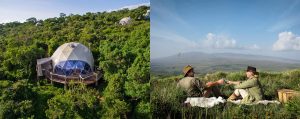The Ultimate Guide to Kilimanjaro Trek Season
Located in Tanzania, Mount Kilimanjaro is Africa’s highest peak and a popular destination for adventure seekers around the world. However, planning a trek to the summit of Kilimanjaro requires careful consideration of the trek season. Understanding the different trek seasons and key factors for planning your expedition can help ensure a successful and enjoyable climb.
Understanding Kilimanjaro Trek Seasons
There are two main trek seasons on Mount Kilimanjaro: the dry season and the wet season. The dry season, which runs from June to October, is considered the best time to climb the mountain. During this time, the weather is generally clear and dry, making for easier and more enjoyable trekking conditions. The wet season, which occurs from November to May, brings more rain and clouds to the mountain, making for more challenging trekking conditions.
Within the dry season, there are two peak trekking seasons: January to February and August to September. These months are popular among trekkers due to the clear skies and relatively mild temperatures on the mountain. However, they can also be crowded, so if you prefer a quieter trek, consider climbing during the shoulder seasons of June to July or October to December.
Key Factors for Planning Your Expedition
When planning your Kilimanjaro trek, there are several key factors to consider in addition to the trek season. One of the most important factors is choosing a reputable tour operator to guide you up the mountain. Sunset Africa Safari is a trusted tour operator that offers guided treks to the summit of Kilimanjaro. To book your expedition, contact info@sunsetafricasafari.com for more information.
Another key factor to consider is your level of fitness and experience. Climbing Kilimanjaro is a challenging endeavor that requires physical fitness and mental resilience. Take the time to train and prepare for the trek to ensure a successful climb.
Additionally, it’s important to pack the right gear for your trek. Make sure to bring warm clothing, sturdy hiking boots, and a good quality backpack. It’s also essential to pack plenty of snacks, water, and sunscreen to stay nourished and hydrated during your climb.
Lastly, be prepared for the altitude on Kilimanjaro. Acute mountain sickness (AMS) is a common concern for trekkers, so take the time to acclimatize properly and listen to your body. If you experience severe symptoms of AMS, it may be necessary to descend to lower altitudes.
In conclusion, understanding the trek seasons and key factors for planning your Kilimanjaro expedition can help ensure a safe and successful climb to the summit. With proper preparation, training, and guidance from a trusted tour operator like Sunset Africa Safari, you can achieve your goal of reaching the roof of Africa.


